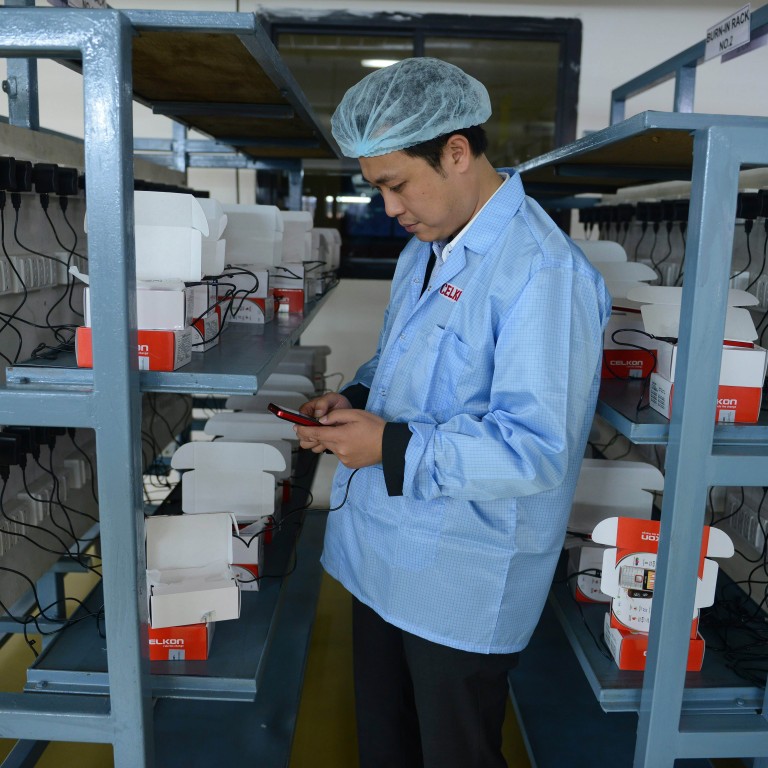
'Make in India' gets some help - from China
Venkatachalam Anbumozhi says India is right to seek investment and participation in new China-led institutions to rev up its manufacturing
The article of agreement of the Asian Infrastructure Investment Bank was signed on June 29. China and India have a combined contribution of 38 per cent of the total US$100 billion and are embracing each other to mobilise and deploy regional resources. Doing so could ease historical tensions and improve India's infrastructure.
China is reshaping the global economic order with its leadership in establishing the AIIB, the New Development Bank, the Bangladesh-China-India-Myanmar economic corridor and the Silk Road expansion. And India has a role to play as Asia's third-largest economy, with historical close ties to the West and Japan.
Indian Prime Minister Narendra Modi's recent visit to China was scrutinised for shifts in the two countries' historically precarious relationship. Personal flourishes like Modi's selfie with Premier Li Keqiang and a trip to President Xi Jinping's hometown were a sign of new cooperation. India stands to gain much from this partnership.
India has long been disaffected with the Bretton Woods institutions. In 1998, the World Bank violated its articles of agreement and denied India fresh loans after it tested nuclear weapons. India is moving away from these institutions; it will be the first president of the New Development Bank and is eyeing a vice-presidency at the AIIB.
It remains to be seen how China and India will cooperate; Will they do so despite border disputes and competition?
They share a common goal of achieving parity with Western living standards. Both strongly supported the Kyoto Protocol, a legally binding climate change treaty, but are likely to curb their greenhouse emissions without reducing economic growth.
Another reason is India's huge needs in water treatment, tunnel building and transport - areas where China has comparative cost advantages. With US$3.8 trillion in reserves, China previously offered 30 per cent of India's targeted infrastructure investment - estimated to be about US$300 billion for 2012 through to 2017.
Yet India has been hesitant to let China in on infrastructure development for security reasons. And there's also the trade deficit to consider.
Some worry that deeper lending from China could entrench problems. India buys more from China than it sells and is a net importer of goods. In 2014, India's trade deficit with China stood at US$36 billion. The trade imbalance is widening India's current account deficit - a major force pushing the Indian rupee to recent lows against the US dollar.
Allowing China and Japan to participate in "Make in India" - an initiative aimed at turning the country into a manufacturing hub - could help build local manufacturing. In any case, the trade deficit with China cannot be wished away as long as India does not produce enough of what it needs.
